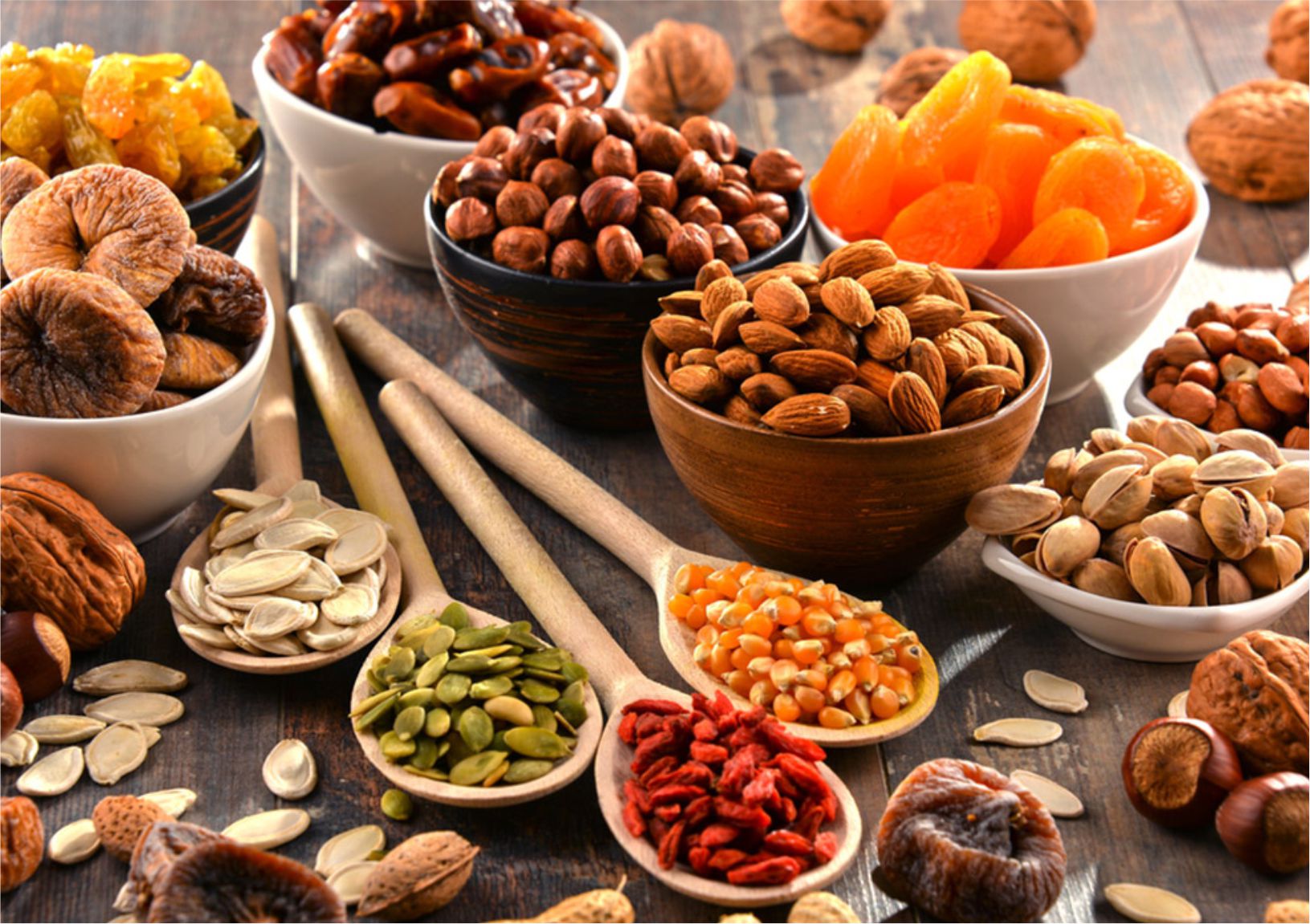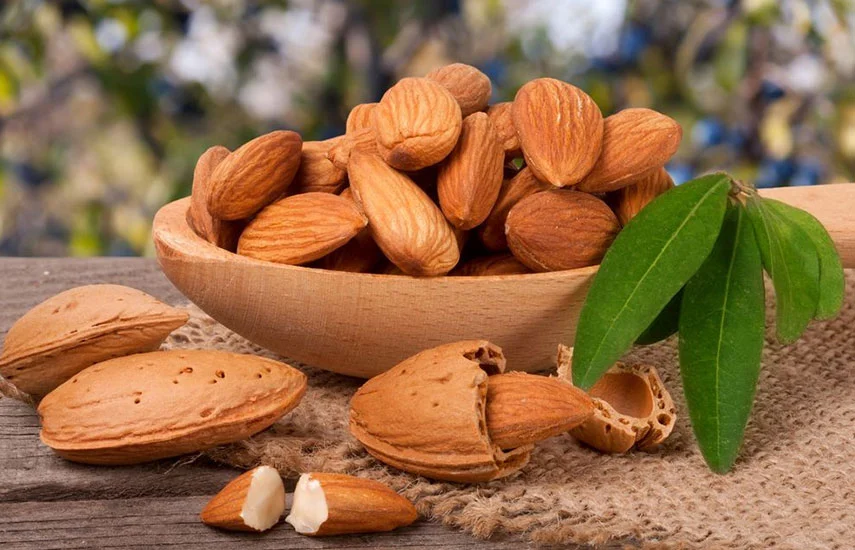The SAG Corporation is implementing a project in Uzbekistan to create modern intensive gardens of Chandler walnuts and Guara and Avijor almonds with a total area of 6,000 hectares. Drip irrigation, a fully automated irrigation system, agrometeorological stations with soil moisture sensors and the production of seedlings using the in-vitro method - all this has already been implemented in this project. The nearest plans include the mechanization of almond harvesting and the launch of processing and packaging lines for finished products. Some of the walnut and almond plantations have already begun to bear fruit, and the first batches of these products have been delivered to the markets of the Middle East.
In an interview with EastFruit experts, Sukhrob Akabirov, manager of the gardens of Sag Gardens LLC, spoke about the largest nut project in Central Asia.

– When did the project to create intensive walnut and almond orchards start?
– The implementation of the project to create intensive gardens of walnuts of the Chandler variety and almonds of the world-famous varieties Guara and Avijor started in the fall of 2017. Initially, the project envisaged the creation of a nut plantation with an area of 500 hectares in the Jambay district of the Samarkand region, but then it was decided to expand the area, several times compared to the original plan. We began to establish additional walnut and almond plantations in the Bulungur district of the Samarkand region, the Yakkabag district of the Kashkadarya region, the Gallaaral district of the Jizzakh region and the Dzhargurgan district of the Surkhandarya region.

As a result, as of June 2023, the total area of nut plantations in the above regions is already 4,800 hectares. Of these, 3,000 hectares of intensive orchards of Chandler walnuts and 1,800 hectares of Guara and Avijor almonds with pollinating varieties Ferragnos and Fereduel.
In addition, the process of establishing new plantations continues to this day. Our plans are to expand the area of nut plantations to 6,000 hectares.

– Why were these particular varieties of walnuts and almonds chosen?
– Traditionally grown in Uzbekistan, and throughout Central Asia, local varieties of walnuts and almonds can be said to be morally outdated from the point of view of modern trends in the world nut market. If we talk about the export of these products, for example, traditional local varieties of walnuts with a dark kernel are supplied mainly to the markets of the CIS countries, while consumers in Europe, Asia and other countries of the world prefer walnuts with a light kernel. In a word, in order to go beyond the CIS with competitive products, we need to grow nut varieties that are most in demand on the world market. This largely explains the choice of walnut and almond varieties within our project.
On the other hand, at the beginning of our project, we also relied on the formation of a domestic market for these nut varieties. Several years after the launch of the project, it can already be stated that in the domestic market of Uzbekistan, walnuts with a light kernel and a thin shell are sold much more expensive than nuts with a dark kernel and a thicker shell. As for almonds, the larger the kernel, the higher the price on the domestic market.

In addition, these nut varieties have a higher yield compared to local varieties. Regarding the selected almond varieties, I would like to add that they have a very low percentage of double kernel products in the total harvest compared to local varieties. This is a very important indicator that affects the selling price of almonds - the more almonds with double kernels in a batch, the lower the price of these products.
When we started implementing this project in 2017, as far as I know, there were no commercial plantations of Chandler nuts and Guara and Avijor almonds in Uzbekistan, at least no large plantations. In this regard, we are pioneers in creating large nut plantations of these varieties.
– Why were these particular regions of Uzbekistan chosen?
– These regions of the country were selected based on climatic conditions and soil. In these regions, the average temperatures in summer and winter are consistent and suitable for growing walnuts, and an important factor is good water supply in these regions of the country.
– What part of the planted nut orchards are already bearing fruit?
– Almost all walnut and almond orchards have already begun to produce crops. According to international practice and recommendations of foreign experts, in the first and second years of fruiting, we removed the fruits immediately after the formation of shoots.
Excluding part of the plantations of the first and second years of fruiting, this year we plan to harvest walnuts on 1,500 hectares, and almonds on 800 hectares.

– From which countries were the seedlings imported?
– At the initial stage of the project for planting Chandler walnut plantations on 500 hectares in the Jambay district of the Samarkand region, seedlings were brought from the USA. For the remaining plantations with a total area of 2,500 hectares, seedlings were imported from Turkey.
As for almond seedlings of the Guara, Avijor, Ferragnos and Fereduel varieties, some were brought from Spain, the rest were imported from Turkey.
Here I will note important information: as part of our project, in 2020, a nursery was created on 24 hectares in the Samarkand region for the production of seedlings of Chandler walnut and almond varieties Guara, Avijor, Ferragnos and Fereduel. Here we have established the production of seedlings using the in-vitro method.

– Do you attract foreign agronomist consultants?
– Yes, we attract consultants from the USA, Spain and Turkey. They draw up a plan of agrotechnical measures, irrigation regimes, the advisability of using certain plant protection products and other necessary work. Foreign consultants monitor the condition of the soil and trees online; we promptly provide them with all the necessary information and, if necessary, they adjust these plans, watering regimes and current tasks. In addition, once every six months or a year, they visit our plantations.

– Managing technological processes in the case of hundreds and thousands of hectares of nut plantations is a very difficult task without the introduction of modern innovative solutions, what has been done or is being done in this direction?
– The irrigation process on all our plantations is fully automated, which also includes a monitoring system for soil moisture levels and irrigation rates. This approach significantly reduces the number of workers in the watering process. In this case, only personnel are required to operate the system and a small number of workers in the fields to monitor the absence of mechanical damage to the components of this system. In every garden in all regions, weather stations with soil moisture sensors are installed, based on the indicators of which the trees are automatically watered.


As for the mechanization of almond harvesting, we have already ordered several pieces of equipment from a manufacturer in Poland. This equipment is attached to a tractor and the tractor stops near each tree, a special material is unrolled, which wraps around the tree on all sides and then a special shaker shakes the tree and all the fruits end up on this unrolled material. After this, the equipment draws in the material, and the almonds fall first into the conveyor, then into a special collector. A similar mechanization of almond harvesting has already been implemented in the almond orchards of the Udabno company in Georgia.
In the first stage of harvesting the almonds, we used so-called hand shakers to shake the almond tree, spreading a non-woven material around the tree where the fruits fell. For this season, we have ordered 20 more units of hand shakers, since the volume of the harvest will grow at a high rate every year as the yield per hectare increases.

– To which countries did you export last year’s harvest?
– Last season we exported our products to the Middle East, the UAE and the Russian market.
– What volume of walnut and almond harvest do you predict this season?
– For almonds – about 500 tons, for walnuts – at least 100 tons.
– Does the company have the capacity to process walnuts and almonds?
- Currently, unfortunately, no. This season we will place orders for splitting, sorting and packaging of our products at the facilities of other enterprises. But this is only in the current season.
We have already ordered almond processing lines with a capacity of 2 t/hour, the delivery of which we expect by the end of this year, and the completion of installation and commissioning in the first months of next year. Thus, by the 2024 season, we will already have our own almond processing capacity.

– What specific stages of refinement and processing will be carried out at these facilities?
– The first stage of almond processing - separation from the husk and the initial stage of purification from impurities, is carried out in the orchards. For this purpose, appropriate equipment has been installed on all almond plantations.
On the almond finishing and processing lines, which we plan to launch at the beginning of next year, the following will be carried out: additional cleaning of almonds from debris and other impurities, sorting by caliber while still in the shell, splitting, kernel calibration, optical sorting by kernel defects, cleaning from metal elements and other impurities, hanging and packaging of finished products.

– What types, sizes and weights of packages are implied?
— If we are talking about almonds in shell, then these are bags weighing 35 kg and boxes weighing 10 kg for each type of almond.
As for the almond kernels, we will pack them in two types of plastic bags - 500 grams and 1 kg.
The international EastFruit team expresses gratitude to Sukhrob Akabirov for the interview and wishes the successful implementation of this project.









